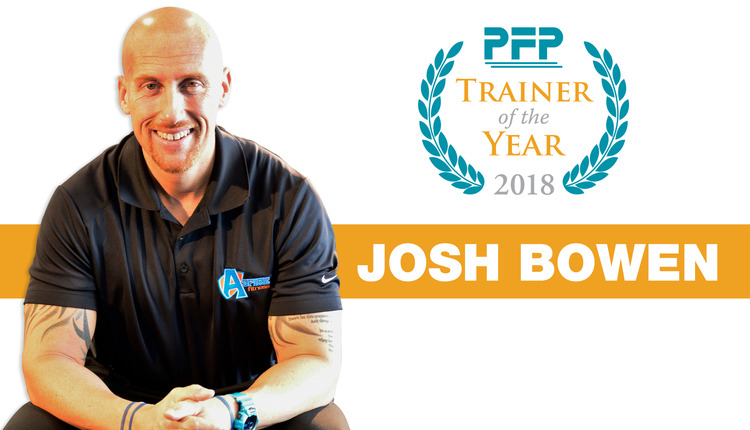"The scientific literature is rife with evidence that intermittent hypoxia stimulates the bodys high-altitude adaptation response, leading to improved endurance. We agree with WADA that long periods of intermittent hypoxia are cause for concern because of potentially detrimental side effects. However, we believe our patent-pending cyclic variations in altitude conditioning (CVAC) process has solved these problems by dramatically reducing the exposure time to just 20 minutes two or three times a week." Allen Ruszkowski, President/CEO, CVAC Systems
CVAC Systems, Inc. (www.cvacsystems.com) announced today that it applauds the decision by the World Anti-Doping Agency (WADA) to exclude "artificially induced hypoxic conditions" from its 2007 list of prohibited substances and practices. The Company also solidly supports WADA's position that more research is needed on the short- and long-term effects of intermittent hypoxia.
Hypoxia is a pathological condition in which the body as a whole is deprived of adequate oxygen supply. Hypoxia occurs in "normal" people when they ascend to high altitude, where it causes altitude sickness, and its potentially fatal complications. High-altitude conditioning uses mild hypoxia to increase the number of red blood cells in the body for enhanced athletic performance.
Intermittent hypoxia has been a focus of extensive research over the past four decades. Moreover, the scientific literature routinely reports detrimental effects of long-term intermittent hypoxia occurring in obstructive sleep apnea (OSA): producing metabolic syndrome, reduced mental acuity, free radical production, hypertension and heart failure. Although the CVAC process is an exception, most techniques that stimulate high altitude adaptation are static, and require long exposure times in excess of three hours every day.
The length-of-exposure of the CVAC process "which CVAC Systems believes offers all of the benefits of high-altitude adaptation without associated negative side effects" is dramatically different from other intermittent hypoxic methods. Scientific validation of the CVAC process concluding that high-altitude adaptation could be achieved in as little as one hour a day, five times per week, was presented was presented at the June 2006 Annual Meeting of the American College of Sports Medicine (ACSM). The study was entitled, "The Effect of a Cyclic Variable Altitude Conditioning Program on Arterial Oxygen Saturation Acclimation."
"We believe WADA's position on artificial hypoxic environments is a boon to CVAC, and we are confident that ongoing and future studies will demonstrate the distinct differences between the CVAC process and existing intermittent hypoxic techniques. Our patent-pending process solves the length-of-exposure dilemma by providing 300-500 dynamic pressure changes to the human body in a 20-minute session," said Allen J. Ruszkowski, President and CEO of CVAC Systems, developer of CVAC. "Inside a CVAC instrument, simulated altitudes can ascend at rates as high as 300 meters per second to 6,800 meters, and then descend at rates as high as 3,400 meters per second. These rapid cycles (cyclic variations) in altitude accelerate the human body's own natural, high-altitude adaptation process. They also provide for a "total body vasopneumatic compression", which we believe will be proven to stimulate lymphatic flow, glandular function, remove toxins and reduce inflammation and swelling. This is definitely not a static, passive process."
A research study investigating the clinical applications of the CVAC process is currently underway at the Veterans Affairs Palo Alto Health Care System ("VAPAHCS"). Principal investigator is Anne L. Friedlander, Ph.D., Associate Director for Education and Evaluation at VAPAHCS's Geriatric Research Education and Clinical Center, and a consulting professor for the program in Human Biology at Stanford University.
Recent research has indicated that many problems found in obstructive sleep apnea (OSA) appear also to be related to intermittent hypoxia. And, although it appears that CVAC is completely free of these effects, Dr. Friedlander's initial study "which is now enrolling subjects" will help address this concern. In compliance with WADAs decision, physiologic data will be continuously acquired during each exposure to CVAC.
Dr. Friedlander also will pursue investigations of potential applications for the CVAC process in addition to enhancing human performance, which may include, but are not limited to: recovery from physical exertion; recovery from blood donation; reduction in inflammation and swelling from injury and surgery; improvements in wound healing; and reduction in pain resulting from strain, exertion, trauma, surgery, injury, amputation or aging.
CVAC Systems, Inc., headquartered in Temecula, Calif., is privately funded and is seeking to place CVAC instruments (pressure vessels) at key luminary research sites for the development of several patent-pending applications such as performance enhancement, disease prevention, therapy and advanced health. For these plans, the Company is seeking a first-round venture/institutional financing.
CVAC Systems, Inc. (www.cvacsystems.com) announced today that it applauds the decision by the World Anti-Doping Agency (WADA) to exclude "artificially induced hypoxic conditions" from its 2007 list of prohibited substances and practices. The Company also solidly supports WADA's position that more research is needed on the short- and long-term effects of intermittent hypoxia.
Hypoxia is a pathological condition in which the body as a whole is deprived of adequate oxygen supply. Hypoxia occurs in "normal" people when they ascend to high altitude, where it causes altitude sickness, and its potentially fatal complications. High-altitude conditioning uses mild hypoxia to increase the number of red blood cells in the body for enhanced athletic performance.
Intermittent hypoxia has been a focus of extensive research over the past four decades. Moreover, the scientific literature routinely reports detrimental effects of long-term intermittent hypoxia occurring in obstructive sleep apnea (OSA): producing metabolic syndrome, reduced mental acuity, free radical production, hypertension and heart failure. Although the CVAC process is an exception, most techniques that stimulate high altitude adaptation are static, and require long exposure times in excess of three hours every day.
The length-of-exposure of the CVAC process "which CVAC Systems believes offers all of the benefits of high-altitude adaptation without associated negative side effects" is dramatically different from other intermittent hypoxic methods. Scientific validation of the CVAC process concluding that high-altitude adaptation could be achieved in as little as one hour a day, five times per week, was presented was presented at the June 2006 Annual Meeting of the American College of Sports Medicine (ACSM). The study was entitled, "The Effect of a Cyclic Variable Altitude Conditioning Program on Arterial Oxygen Saturation Acclimation."
"We believe WADA's position on artificial hypoxic environments is a boon to CVAC, and we are confident that ongoing and future studies will demonstrate the distinct differences between the CVAC process and existing intermittent hypoxic techniques. Our patent-pending process solves the length-of-exposure dilemma by providing 300-500 dynamic pressure changes to the human body in a 20-minute session," said Allen J. Ruszkowski, President and CEO of CVAC Systems, developer of CVAC. "Inside a CVAC instrument, simulated altitudes can ascend at rates as high as 300 meters per second to 6,800 meters, and then descend at rates as high as 3,400 meters per second. These rapid cycles (cyclic variations) in altitude accelerate the human body's own natural, high-altitude adaptation process. They also provide for a "total body vasopneumatic compression", which we believe will be proven to stimulate lymphatic flow, glandular function, remove toxins and reduce inflammation and swelling. This is definitely not a static, passive process."
A research study investigating the clinical applications of the CVAC process is currently underway at the Veterans Affairs Palo Alto Health Care System ("VAPAHCS"). Principal investigator is Anne L. Friedlander, Ph.D., Associate Director for Education and Evaluation at VAPAHCS's Geriatric Research Education and Clinical Center, and a consulting professor for the program in Human Biology at Stanford University.
Recent research has indicated that many problems found in obstructive sleep apnea (OSA) appear also to be related to intermittent hypoxia. And, although it appears that CVAC is completely free of these effects, Dr. Friedlander's initial study "which is now enrolling subjects" will help address this concern. In compliance with WADAs decision, physiologic data will be continuously acquired during each exposure to CVAC.
Dr. Friedlander also will pursue investigations of potential applications for the CVAC process in addition to enhancing human performance, which may include, but are not limited to: recovery from physical exertion; recovery from blood donation; reduction in inflammation and swelling from injury and surgery; improvements in wound healing; and reduction in pain resulting from strain, exertion, trauma, surgery, injury, amputation or aging.
CVAC Systems, Inc., headquartered in Temecula, Calif., is privately funded and is seeking to place CVAC instruments (pressure vessels) at key luminary research sites for the development of several patent-pending applications such as performance enhancement, disease prevention, therapy and advanced health. For these plans, the Company is seeking a first-round venture/institutional financing.







